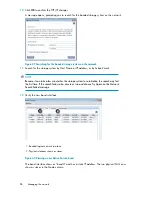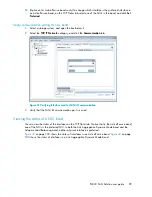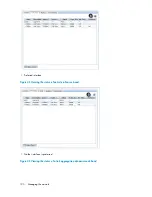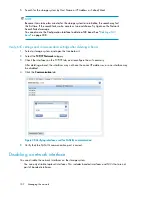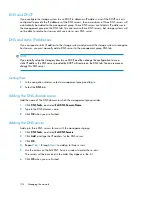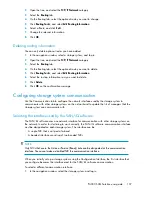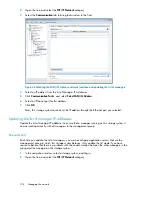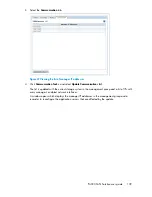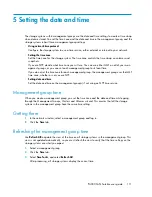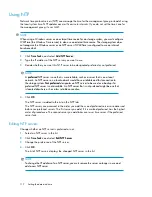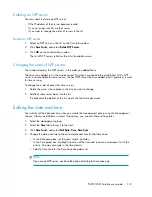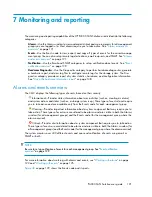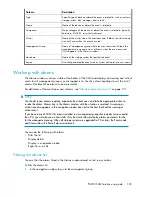
5 Setting the date and time
The storage systems within management groups use the date and time settings to create a time stamp
when data is stored. You set the time zone and the date and time in the management group, and the
storage systems inherit those management group settings.
•
Using network time protocol
Configure the storage system to use a time service, either external or internal to your network.
•
Setting the time zone
Set the time zone for the storage system. The time zone controls the time stamp on volumes and
snapshots.
If you use NTP, decide what time zone you will use. You can use either GMT on all of your man-
agement groups, or you can set each management group to its local time.
If you do not set the time zone for each management group, the management group uses the GMT
time zone, whether or not you use NTP.
•
Setting date and time
Set the date and time on the management group(s) if not using an NTP time service.
Management group time
When you create a management group, you set the time zone and the date and time while going
through the Management Groups, Clusters and Volumes wizard. This ensures that all the storage
systems in the management group have the same time setting.
Getting there
1.
In the network window, select a management group and log in.
2.
Click the
Time
tab.
Refreshing the management group time
Use
Refresh All
to update the view of the time on all storage systems in the management group. This
view is not updated automatically, so you must refresh the view to verify that the time settings on the
storage systems are what you expect.
1.
Select a management group.
2.
Click the
Time
tab.
3.
Select
Time Tasks
, and select
Refresh All
.
After processing, all storage systems display the current time.
P4000 SAN Solution user guide
111
Summary of Contents for StorageWorks P4000 Series
Page 24: ...24 ...
Page 38: ...Getting started 38 ...
Page 52: ...Working with storage systems 52 ...
Page 78: ...Storage Configuration Disk RAID and Disk Management 78 ...
Page 110: ...Managing the network 110 ...
Page 120: ...Administrative users and groups 120 ...
Page 232: ...Using snapshots 232 ...
Page 256: ...Working with scripting 256 ...
Page 268: ...Controlling server access to volumes 268 ...
Page 298: ...Registering advanced features 298 ...
Page 322: ...Replacing disks reference 322 ...
Page 324: ...Third party licenses 324 ...


